Prevention of waste

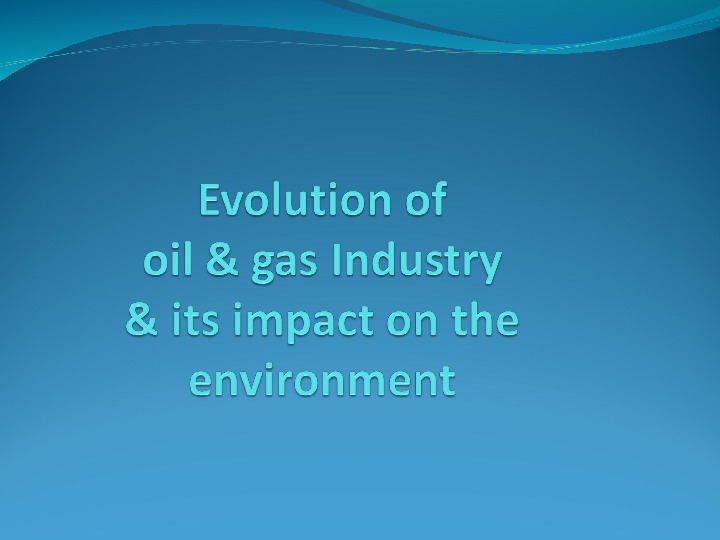
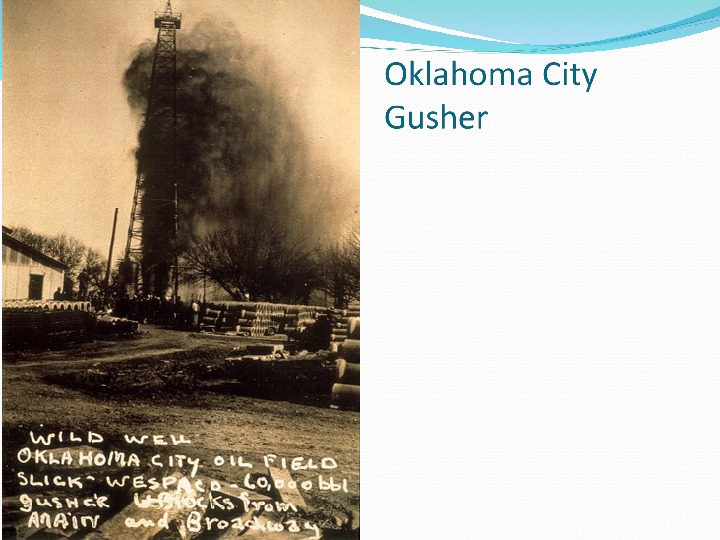



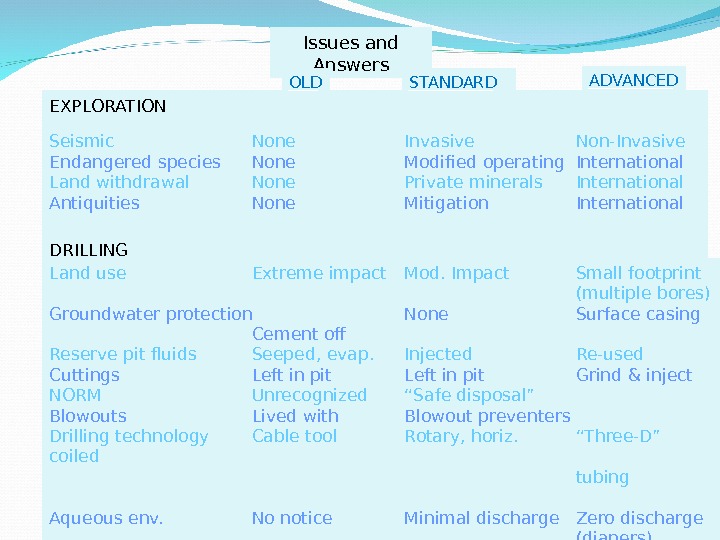

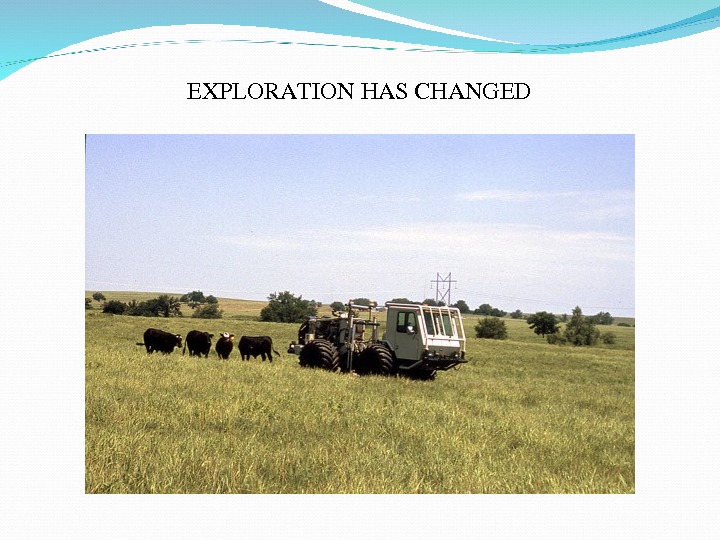



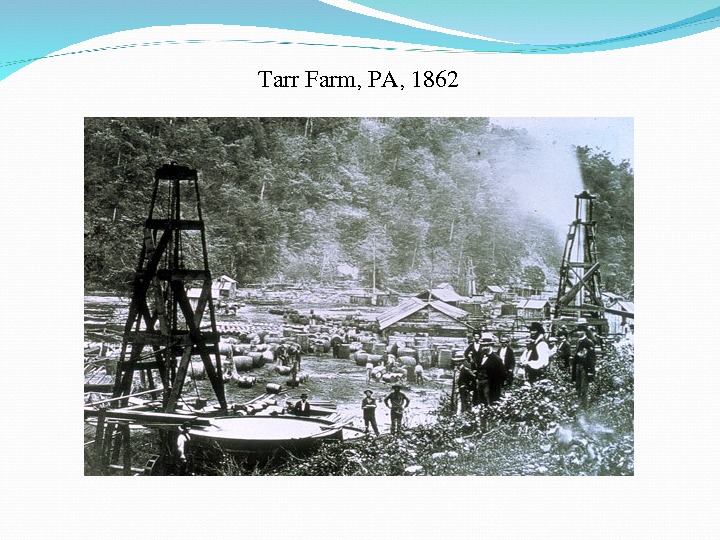


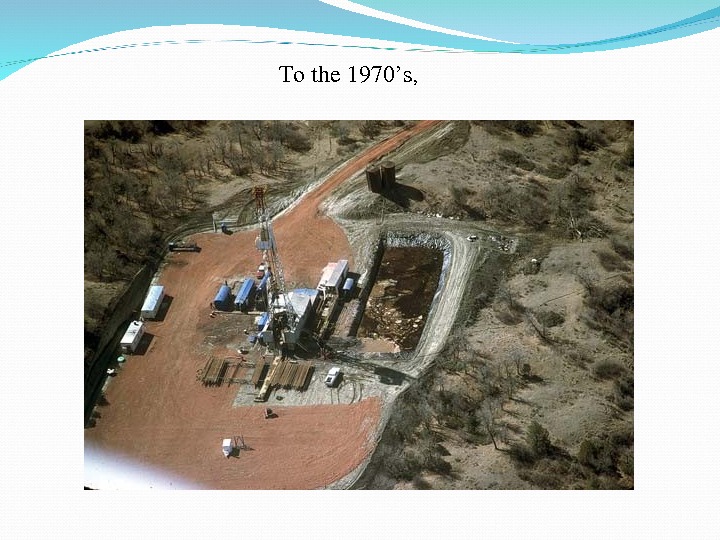


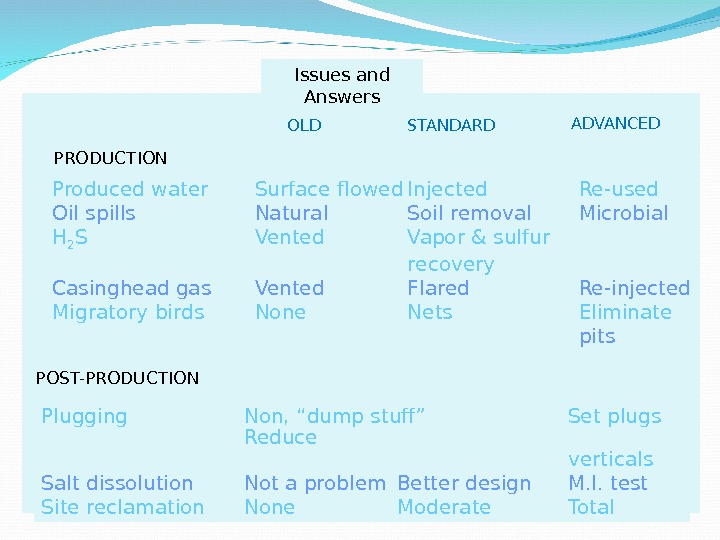
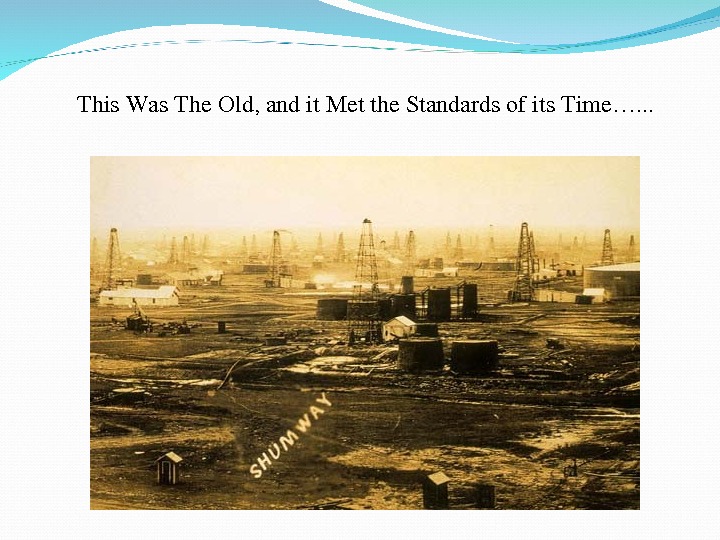
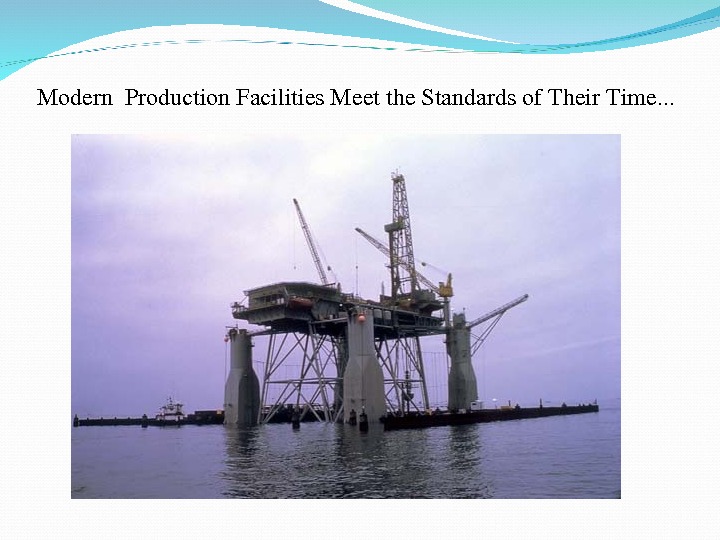
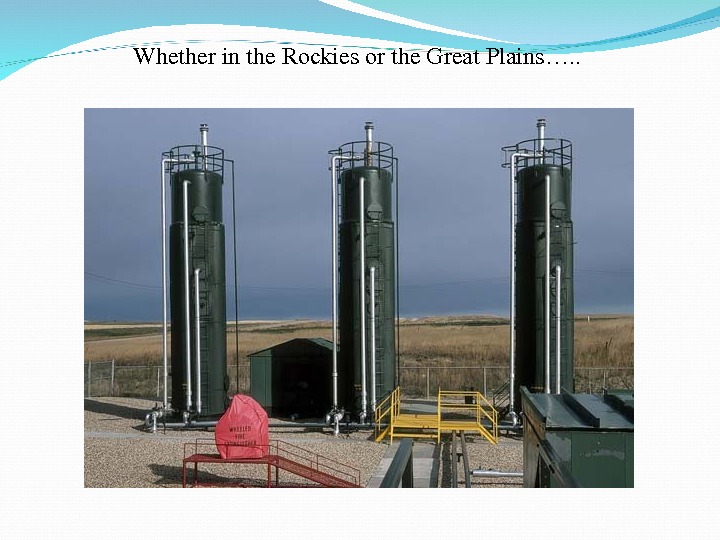

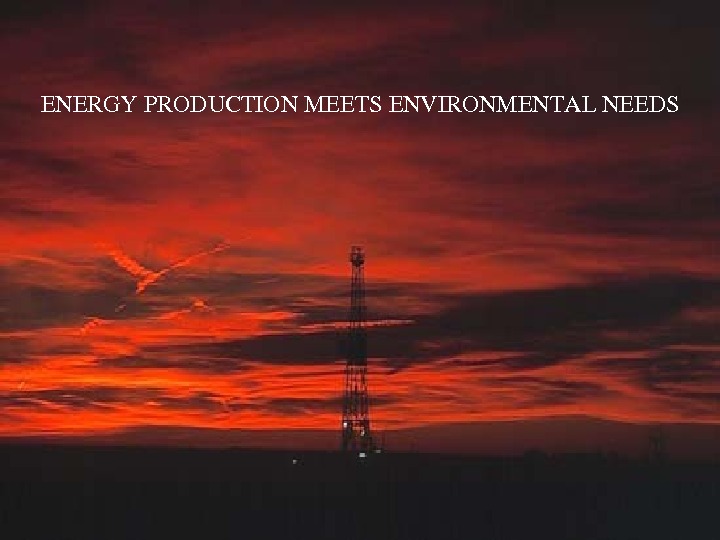
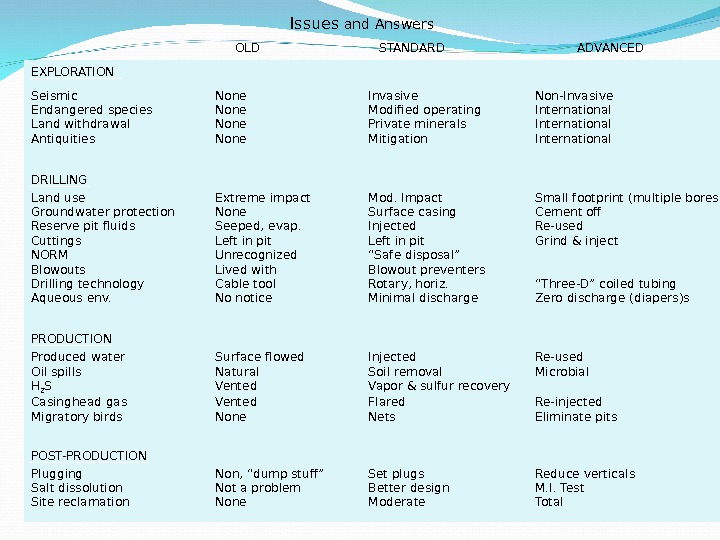
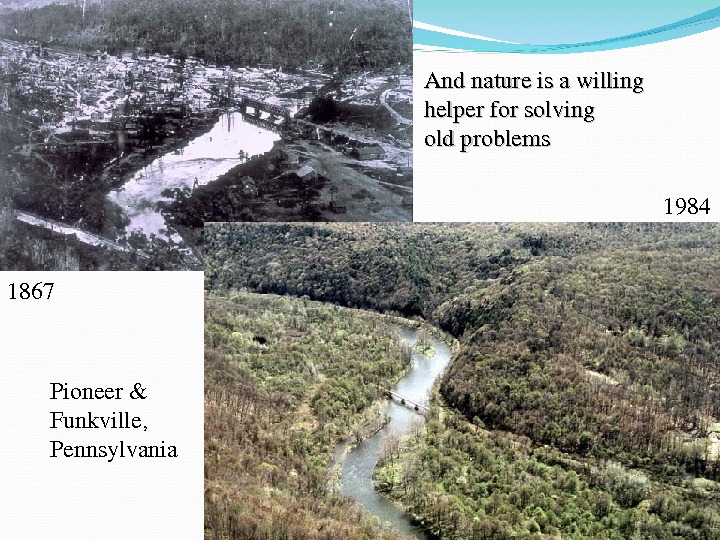
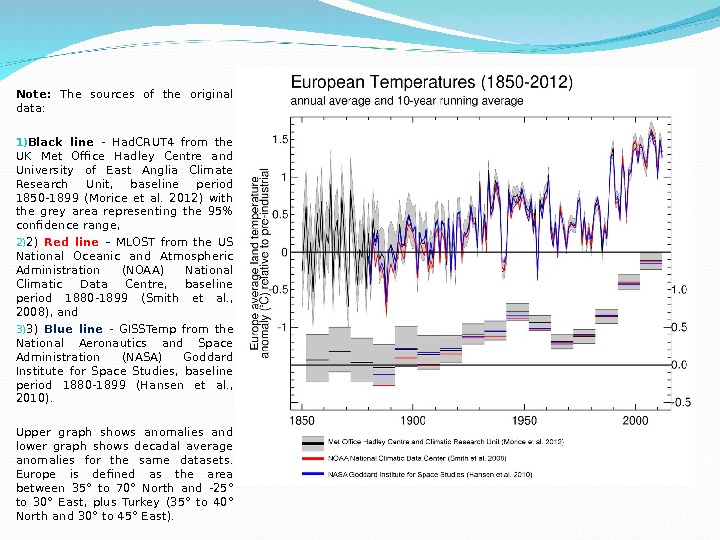





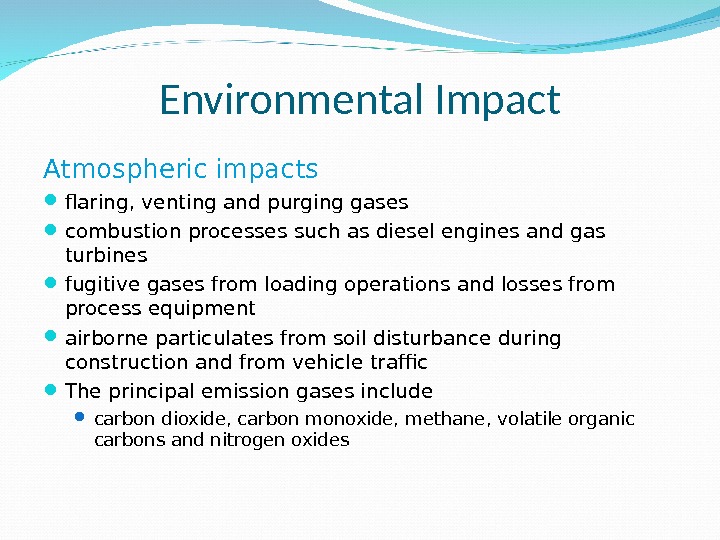
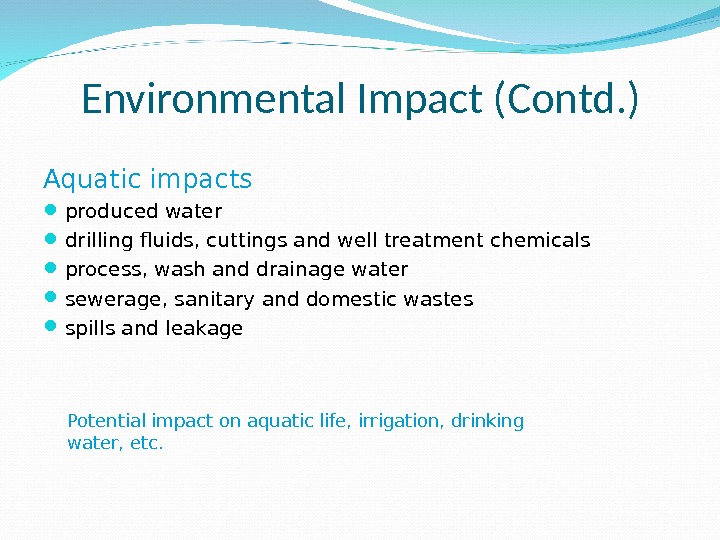

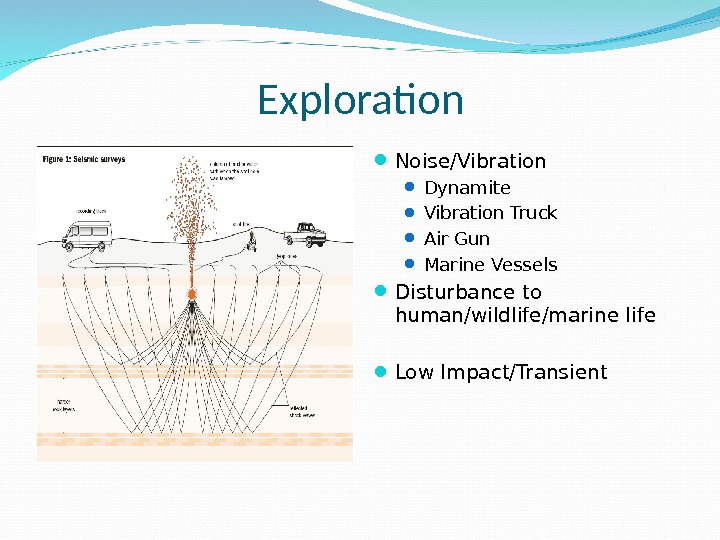



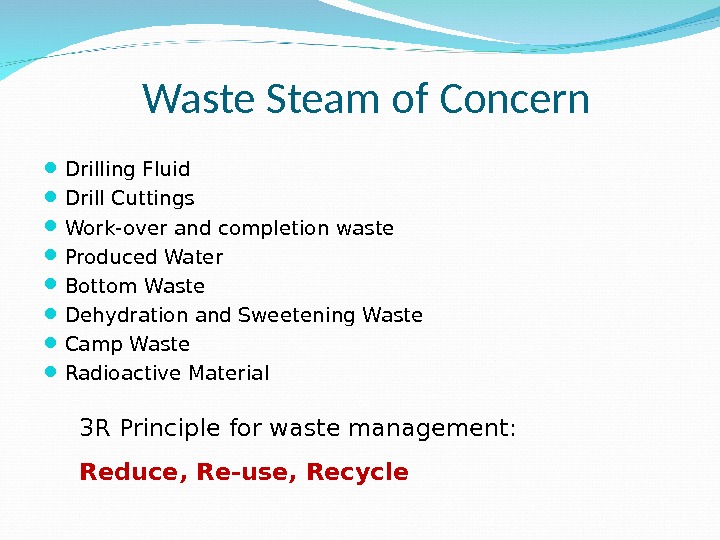
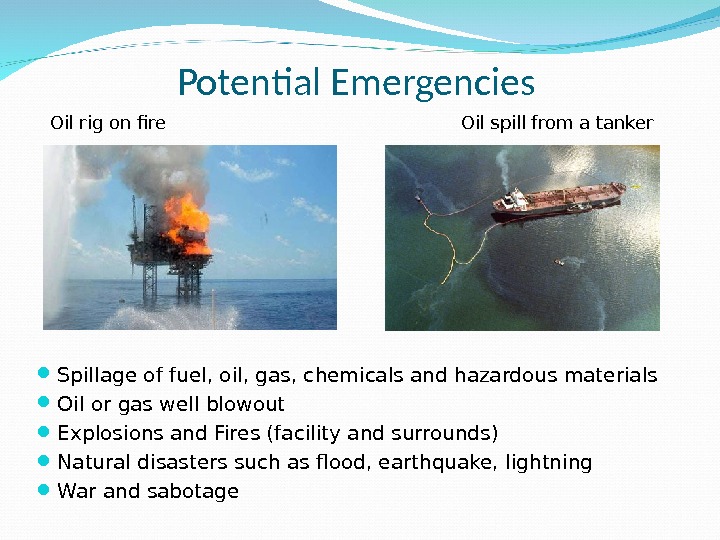
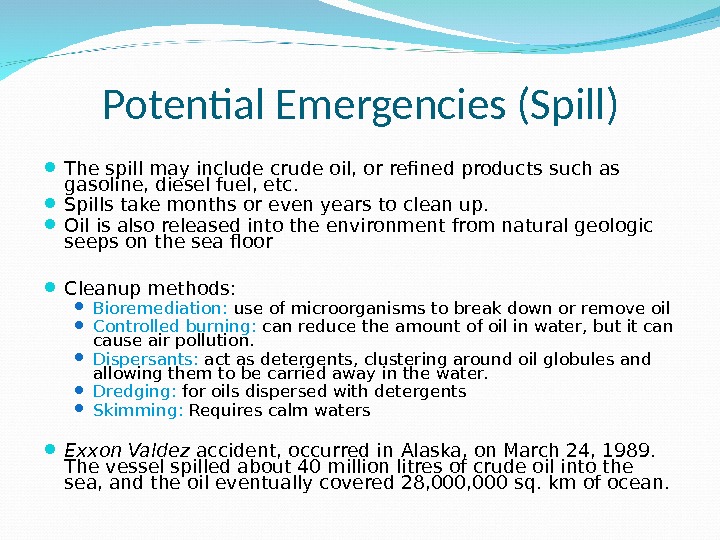
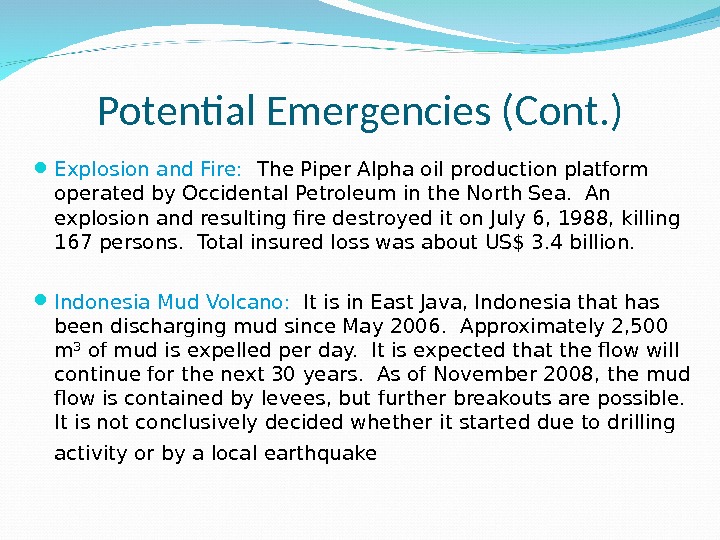


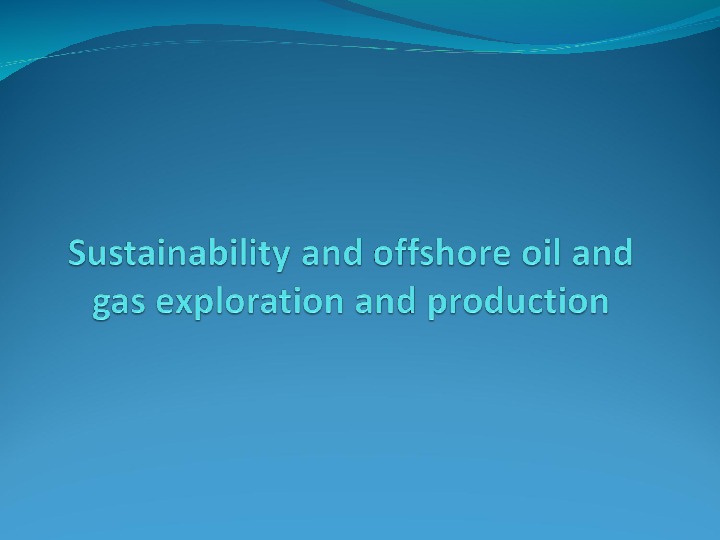



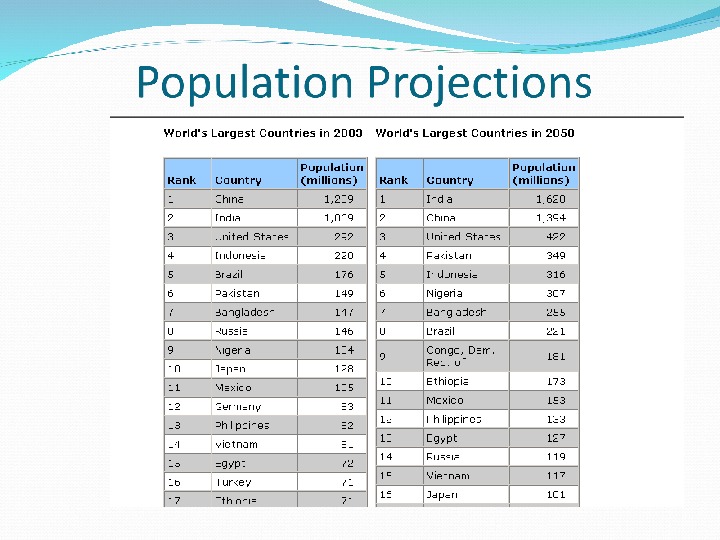



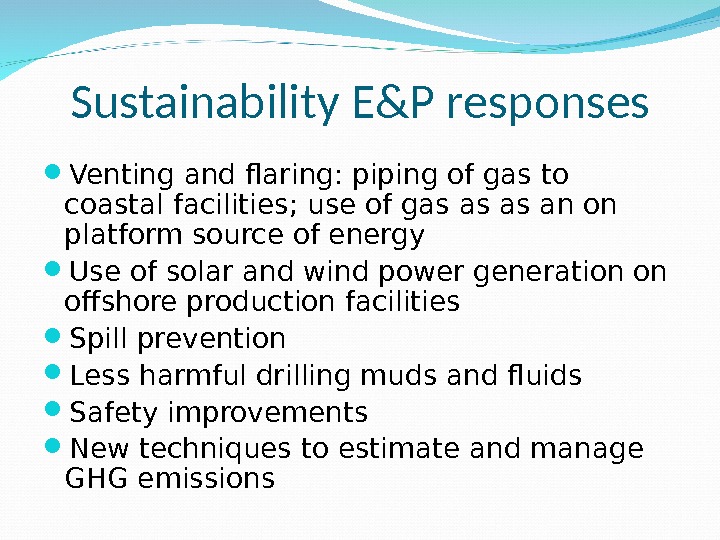

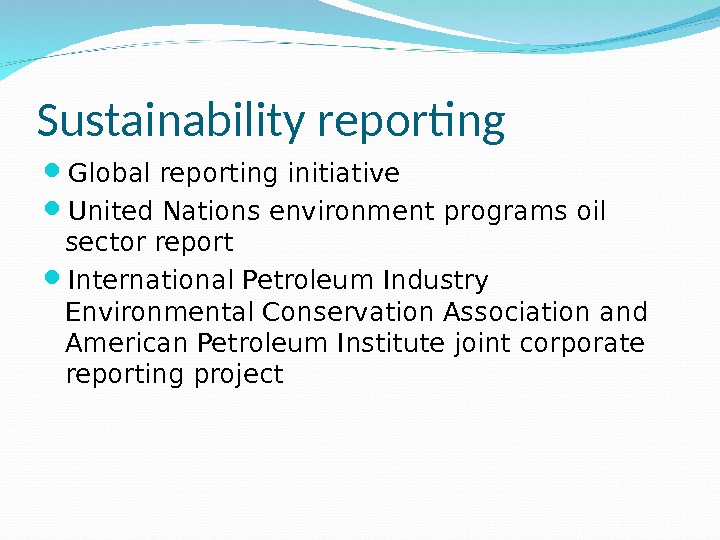


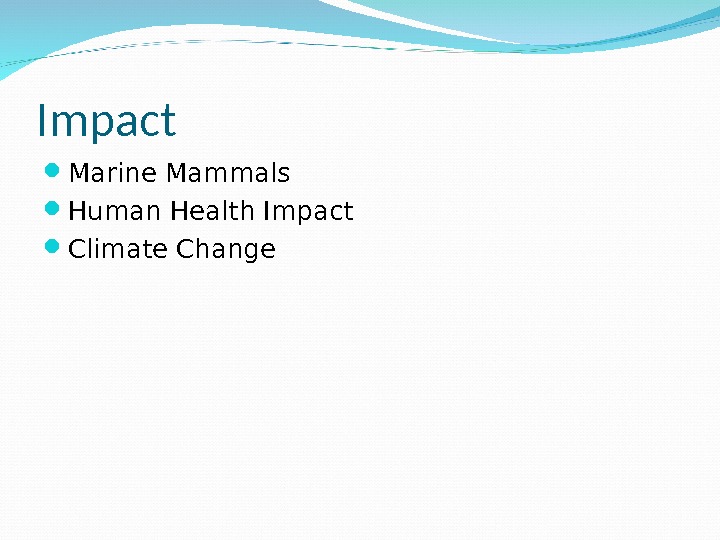


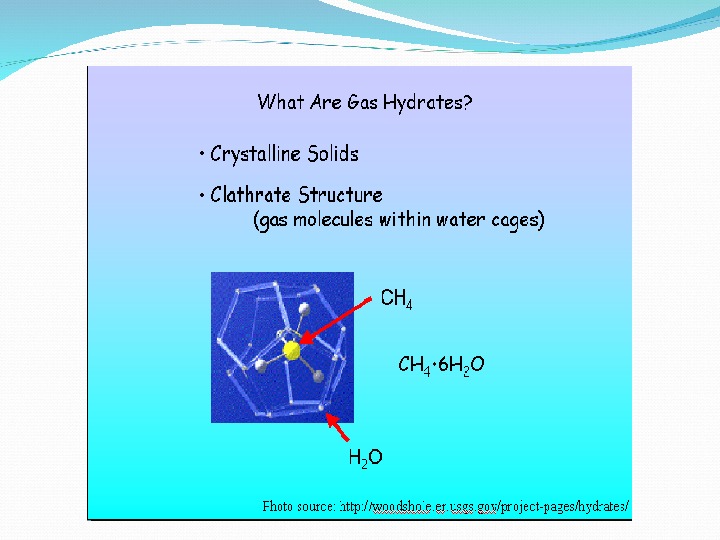

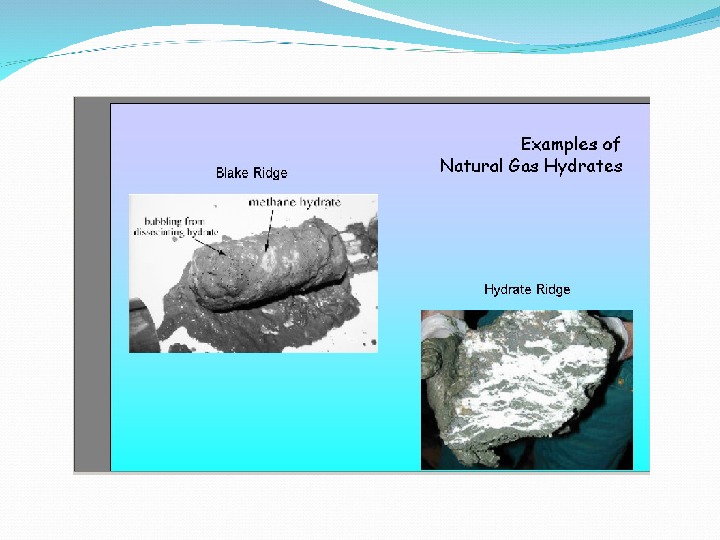

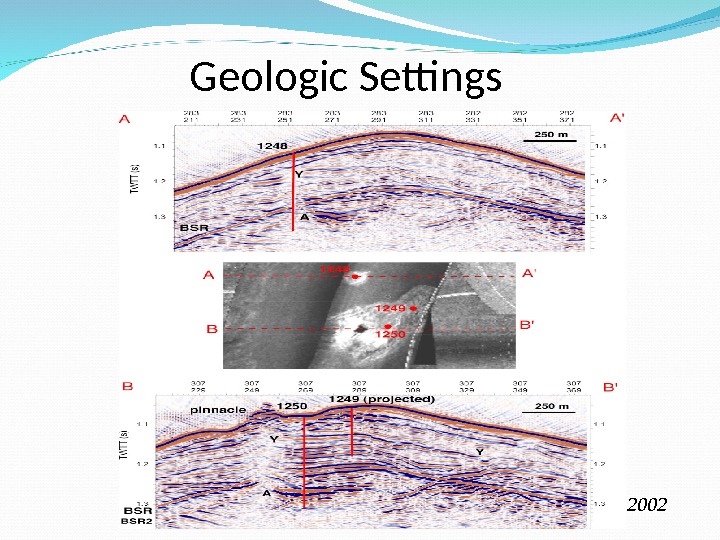
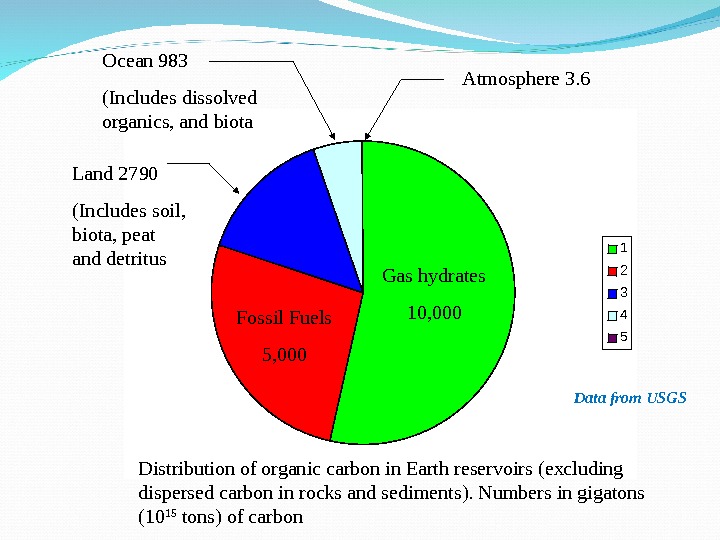



- Размер: 6.5 Mегабайта
- Количество слайдов: 69
Описание презентации Prevention of waste по слайдам


 Prevention of waste Conservation of the resource Environmental protection Regulatory premises
Prevention of waste Conservation of the resource Environmental protection Regulatory premises
 • Oil • Gas • Water (saline or fresh) • Nitrogen • Other gases (H 2 S, He) (characteristics controlled by geologic settings) Produced fluids
• Oil • Gas • Water (saline or fresh) • Nitrogen • Other gases (H 2 S, He) (characteristics controlled by geologic settings) Produced fluids
 Environmental Issues. EXPLORATION Site access Seismic PRODUCTION Produced water Hydrogen sulfide Casinghead gas venting Oil spills Migratory birds DRILLING AND COMPLETION Area of land use Drilling fluids NORM Blowouts Protection of ground water Protection of aqueous environments POST-PRODUCTION Plugging depleted wells Salt dissolution Reclamation
Environmental Issues. EXPLORATION Site access Seismic PRODUCTION Produced water Hydrogen sulfide Casinghead gas venting Oil spills Migratory birds DRILLING AND COMPLETION Area of land use Drilling fluids NORM Blowouts Protection of ground water Protection of aqueous environments POST-PRODUCTION Plugging depleted wells Salt dissolution Reclamation
 Issues and Answers EXPLORATION Seismic None Invasive Non-Invasive Endangered species None Modified operating International Land withdrawal None Private minerals International Antiquities None Mitigation International DRILLING Land use Extreme impact Mod. Impact Small footprint (multiple bores) Groundwater protection None Surface casing Cement of Reserve pit fluids Seeped, evap. Injected Re-used Cuttings Left in pit Grind & inject NORM Unrecognized “Safe disposal” Blowouts Lived with Blowout preventers Drilling technology Cable tool Rotary, horiz. “Three-D” coiled tubing Aqueous env. No notice Minimal discharge Zero discharge (diapers)OLD STANDARD ADVAN
Issues and Answers EXPLORATION Seismic None Invasive Non-Invasive Endangered species None Modified operating International Land withdrawal None Private minerals International Antiquities None Mitigation International DRILLING Land use Extreme impact Mod. Impact Small footprint (multiple bores) Groundwater protection None Surface casing Cement of Reserve pit fluids Seeped, evap. Injected Re-used Cuttings Left in pit Grind & inject NORM Unrecognized “Safe disposal” Blowouts Lived with Blowout preventers Drilling technology Cable tool Rotary, horiz. “Three-D” coiled tubing Aqueous env. No notice Minimal discharge Zero discharge (diapers)OLD STANDARD ADVAN
 The. Old: 1920’s. El. Dorado. Field, KS
The. Old: 1920’s. El. Dorado. Field, KS
 EXPLORATIONHASCHANG
EXPLORATIONHASCHANG
 For. Sensitive. Areas, Helicopter. Operations
For. Sensitive. Areas, Helicopter. Operations
 Eventhe. Drillers. Wear. Suits
Eventhe. Drillers. Wear. Suits
 Smallimpactsonland
Smallimpactsonland
 Tarr. Farm, PA,
Tarr. Farm, PA,
 But. Nature. Heals: Tarr. Farm, 1991, same view
But. Nature. Heals: Tarr. Farm, 1991, same view
 Drillinghaschanged, fromtheturnofthecentury,
Drillinghaschanged, fromtheturnofthecentury,
 Tothe 1970’s,
Tothe 1970’s,
 To. Fully. Diapered. Rigs
To. Fully. Diapered. Rigs
 To Advanced Drilling Systems. . .
To Advanced Drilling Systems. . .
 Issues and Answers PRODUCTION Produced water Surface flowed Injected Re-used Oil spills Natural Soil removal Microbial H 2 S Vented Vapor & sulfur recovery Casinghead gas Vented Flared Re-injected Migratory birds None Nets Eliminate pits. OLD STANDARD ADVANCED POST-PRODUCTION Plugging Non, “dump stuf” Set plugs Reduce verticals Salt dissolution Not a problem Better design M. I. test Site reclamation None Moderate Total
Issues and Answers PRODUCTION Produced water Surface flowed Injected Re-used Oil spills Natural Soil removal Microbial H 2 S Vented Vapor & sulfur recovery Casinghead gas Vented Flared Re-injected Migratory birds None Nets Eliminate pits. OLD STANDARD ADVANCED POST-PRODUCTION Plugging Non, “dump stuf” Set plugs Reduce verticals Salt dissolution Not a problem Better design M. I. test Site reclamation None Moderate Total
 This. Was. The. Old, andit. Metthe. Standardsofits. Time…. . .
This. Was. The. Old, andit. Metthe. Standardsofits. Time…. . .
 Modern. Production. Facilities. Meetthe. Standardsof. Their. Time. . .
Modern. Production. Facilities. Meetthe. Standardsof. Their. Time. . .
 Whetherinthe. Rockiesorthe. Great. Plains…. .
Whetherinthe. Rockiesorthe. Great. Plains…. .
 Or. Arctic. North. Slope
Or. Arctic. North. Slope
 ENERGYPRODUCTIONMEETSENVIRONMENTALNEEDS
ENERGYPRODUCTIONMEETSENVIRONMENTALNEEDS
 Issues and Answers EXPLORATION Seismic None Invasive Non-Invasive Endangered species None Modified operating International Land withdrawal None Private minerals International Antiquities None Mitigation International DRILLING Land use Extreme impact Mod. Impact Small footprint (multiple bores) Groundwater protection None Surface casing Cement of Reserve pit fluids Seeped, evap. Injected Re-used Cuttings Left in pit Grind & inject NORM Unrecognized “Safe disposal” Blowouts Lived with Blowout preventers Drilling technology Cable tool Rotary, horiz. “Three-D” coiled tubing Aqueous env. No notice Minimal discharge Zero discharge (diapers)s PRODUCTION Produced water Surface flowed Injected Re-used Oil spills Natural Soil removal Microbial H 2 S Vented Vapor & sulfur recovery Casinghead gas Vented Flared Re-injected Migratory birds None Nets Eliminate pits POST-PRODUCTION Plugging Non, “dump stuf” Set plugs Reduce verticals Salt dissolution Not a problem Better design M. I. Test Site reclamation None Moderate Total. OLD STANDARD ADVAN
Issues and Answers EXPLORATION Seismic None Invasive Non-Invasive Endangered species None Modified operating International Land withdrawal None Private minerals International Antiquities None Mitigation International DRILLING Land use Extreme impact Mod. Impact Small footprint (multiple bores) Groundwater protection None Surface casing Cement of Reserve pit fluids Seeped, evap. Injected Re-used Cuttings Left in pit Grind & inject NORM Unrecognized “Safe disposal” Blowouts Lived with Blowout preventers Drilling technology Cable tool Rotary, horiz. “Three-D” coiled tubing Aqueous env. No notice Minimal discharge Zero discharge (diapers)s PRODUCTION Produced water Surface flowed Injected Re-used Oil spills Natural Soil removal Microbial H 2 S Vented Vapor & sulfur recovery Casinghead gas Vented Flared Re-injected Migratory birds None Nets Eliminate pits POST-PRODUCTION Plugging Non, “dump stuf” Set plugs Reduce verticals Salt dissolution Not a problem Better design M. I. Test Site reclamation None Moderate Total. OLD STANDARD ADVAN
 Andnatureisawilling helperforsolving oldproblems Pioneer& Funkville, Pennsylvania
Andnatureisawilling helperforsolving oldproblems Pioneer& Funkville, Pennsylvania
 Note: The sources of the original data: 1) Black line — Had. CRUT 4 from the UK Met Office Hadley Centre and University of East Anglia Climate Research Unit, baseline period 1850 -1899 (Morice et al. 2012) with the grey area representing the 95% confidence range, 2) 2) Red line – MLOST from the US National Oceanic and Atmospheric Administration (NOAA) National Climatic Data Centre, baseline period 1880 -1899 (Smith et al. , 2008), and 3) 3) Blue line — GISSTemp from the National Aeronautics and Space Administration (NASA) Goddard Institute for Space Studies, baseline period 1880 -1899 (Hansen et al. , 2010). Upper graph shows anomalies and lower graph shows decadal average anomalies for the same datasets. Europe is defined as the area between 35° to 70° North and -25° to 30° East, plus Turkey (35° to 40° North and 30° to 45° East).
Note: The sources of the original data: 1) Black line — Had. CRUT 4 from the UK Met Office Hadley Centre and University of East Anglia Climate Research Unit, baseline period 1850 -1899 (Morice et al. 2012) with the grey area representing the 95% confidence range, 2) 2) Red line – MLOST from the US National Oceanic and Atmospheric Administration (NOAA) National Climatic Data Centre, baseline period 1880 -1899 (Smith et al. , 2008), and 3) 3) Blue line — GISSTemp from the National Aeronautics and Space Administration (NASA) Goddard Institute for Space Studies, baseline period 1880 -1899 (Hansen et al. , 2010). Upper graph shows anomalies and lower graph shows decadal average anomalies for the same datasets. Europe is defined as the area between 35° to 70° North and -25° to 30° East, plus Turkey (35° to 40° North and 30° to 45° East).
 Projected global energy demand to
Projected global energy demand to
 Role of Oil and Gas Total world electricity generated by fuel, 2009.
Role of Oil and Gas Total world electricity generated by fuel, 2009.
 Activities in the Petroleum Industry Upstream Exploration Land & Aerial surveys, Satellite Images Gravitational, Magnetic & Seismic Surveys Exploration Drilling (“Wildcat”) Formation Evaluation Development Drilling Appraisal/production wells Production Facilities Gathering Systems Production Downstream Transportation Refining Marketing
Activities in the Petroleum Industry Upstream Exploration Land & Aerial surveys, Satellite Images Gravitational, Magnetic & Seismic Surveys Exploration Drilling (“Wildcat”) Formation Evaluation Development Drilling Appraisal/production wells Production Facilities Gathering Systems Production Downstream Transportation Refining Marketing
 Occurrence of Oil & Gas On land Ofshore Continental Shelves Deep sea Deserts Wetlands Forests Mountainous areas Arctic Region Technological & Environmental challenges change with location type
Occurrence of Oil & Gas On land Ofshore Continental Shelves Deep sea Deserts Wetlands Forests Mountainous areas Arctic Region Technological & Environmental challenges change with location type
 Environmental issues for the Oil & Gas Sector The Oil & Gas Sector has a variety of impacts on the environment. These impacts depends upon the stage of the process, the size and complexity of the project, the nature and sensitivity of the surrounding environment and the efectiveness of planning, pollution prevention, mitigation and control techniques. The major areas of environmental concern includes : 1. Atmospheric Impacts 2. Aquatic Impacts 3. Terrestrial Impacts 4. Ecosystem Impacts 5. Potential Emergencies
Environmental issues for the Oil & Gas Sector The Oil & Gas Sector has a variety of impacts on the environment. These impacts depends upon the stage of the process, the size and complexity of the project, the nature and sensitivity of the surrounding environment and the efectiveness of planning, pollution prevention, mitigation and control techniques. The major areas of environmental concern includes : 1. Atmospheric Impacts 2. Aquatic Impacts 3. Terrestrial Impacts 4. Ecosystem Impacts 5. Potential Emergencies
 Environmental Impact Atmospheric impacts flaring, venting and purging gases combustion processes such as diesel engines and gas turbines fugitive gases from loading operations and losses from process equipment airborne particulates from soil disturbance during construction and from vehicle traffic The principal emission gases include carbon dioxide, carbon monoxide, methane, volatile organic carbons and nitrogen oxides
Environmental Impact Atmospheric impacts flaring, venting and purging gases combustion processes such as diesel engines and gas turbines fugitive gases from loading operations and losses from process equipment airborne particulates from soil disturbance during construction and from vehicle traffic The principal emission gases include carbon dioxide, carbon monoxide, methane, volatile organic carbons and nitrogen oxides
 Environmental Impact (Contd. ) Aquatic impacts produced water drilling fluids, cuttings and well treatment chemicals process, wash and drainage water sewerage, sanitary and domestic wastes spills and leakage Potential impact on aquatic life, irrigation, drinking water, etc.
Environmental Impact (Contd. ) Aquatic impacts produced water drilling fluids, cuttings and well treatment chemicals process, wash and drainage water sewerage, sanitary and domestic wastes spills and leakage Potential impact on aquatic life, irrigation, drinking water, etc.
 Environmental Impact (Contd. ) Terrestrial impacts physical disturbance as a result of construction contamination resulting from spillage and leakage solid waste disposal indirect impact arising from opening access and social change Potential impact on forests, vegetation, agriculture, human and animal life
Environmental Impact (Contd. ) Terrestrial impacts physical disturbance as a result of construction contamination resulting from spillage and leakage solid waste disposal indirect impact arising from opening access and social change Potential impact on forests, vegetation, agriculture, human and animal life
 Exploration Noise/Vibration Dynamite Vibration Truck Air Gun Marine Vessels Disturbance to human/wildlife/marine life Low Impact/Transient
Exploration Noise/Vibration Dynamite Vibration Truck Air Gun Marine Vessels Disturbance to human/wildlife/marine life Low Impact/Transient
 Drilling (wildcats, appraisal, development) Drilling Fluid (Mud) Water/Oil/Synthetic based Recycle, treatment, disposal by injection Drill Cuttings Land farming, burial, bio-remediation, injection Site preparing Roads Camps-waste generation Long lasting Impact
Drilling (wildcats, appraisal, development) Drilling Fluid (Mud) Water/Oil/Synthetic based Recycle, treatment, disposal by injection Drill Cuttings Land farming, burial, bio-remediation, injection Site preparing Roads Camps-waste generation Long lasting Impact
 Production Produced water Salinity Chemicals Oil content Treatment Re-injection Camp waste Leakage/spillage Flare Noise/vibration Engine exhaust
Production Produced water Salinity Chemicals Oil content Treatment Re-injection Camp waste Leakage/spillage Flare Noise/vibration Engine exhaust
 Transportation • land afected by construction • leakage/spillage • accidents – pipeline explosion, oil spill from tankers, etc. Oil tanker LNG tanker Pipeline under construction
Transportation • land afected by construction • leakage/spillage • accidents – pipeline explosion, oil spill from tankers, etc. Oil tanker LNG tanker Pipeline under construction
 Waste Steam of Concern Drilling Fluid Drill Cuttings Work-over and completion waste Produced Water Bottom Waste Dehydration and Sweetening Waste Camp Waste Radioactive Material 3 R Principle for waste management: Reduce, Re-use, Recycle
Waste Steam of Concern Drilling Fluid Drill Cuttings Work-over and completion waste Produced Water Bottom Waste Dehydration and Sweetening Waste Camp Waste Radioactive Material 3 R Principle for waste management: Reduce, Re-use, Recycle
 Potential Emergencies Spillage of fuel, oil, gas, chemicals and hazardous materials Oil or gas well blowout Explosions and Fires (facility and surrounds) Natural disasters such as flood, earthquake, lightning War and sabotage. Oil rig on fire Oil spill from a tanker
Potential Emergencies Spillage of fuel, oil, gas, chemicals and hazardous materials Oil or gas well blowout Explosions and Fires (facility and surrounds) Natural disasters such as flood, earthquake, lightning War and sabotage. Oil rig on fire Oil spill from a tanker
 Potential Emergencies (Spill) The spill may include crude oil, or refined products such as gasoline, diesel fuel, etc. Spills take months or even years to clean up. Oil is also released into the environment from natural geologic seeps on the sea floor Cleanup methods: Bioremediation: use of microorganisms to break down or remove oil Controlled burning: can reduce the amount of oil in water, but it can cause air pollution. Dispersants: act as detergents, clustering around oil globules and allowing them to be carried away in the water. Dredging: for oils dispersed with detergents Skimming: Requires calm waters Exxon Valdez accident, occurred in Alaska, on March 24, 1989. The vessel spilled about 40 million litres of crude oil into the sea, and the oil eventually covered 28, 000 sq. km of ocean.
Potential Emergencies (Spill) The spill may include crude oil, or refined products such as gasoline, diesel fuel, etc. Spills take months or even years to clean up. Oil is also released into the environment from natural geologic seeps on the sea floor Cleanup methods: Bioremediation: use of microorganisms to break down or remove oil Controlled burning: can reduce the amount of oil in water, but it can cause air pollution. Dispersants: act as detergents, clustering around oil globules and allowing them to be carried away in the water. Dredging: for oils dispersed with detergents Skimming: Requires calm waters Exxon Valdez accident, occurred in Alaska, on March 24, 1989. The vessel spilled about 40 million litres of crude oil into the sea, and the oil eventually covered 28, 000 sq. km of ocean.
 Potential Emergencies (Cont. ) Explosion and Fire: The Piper Alpha oil production platform operated by Occidental Petroleum in the North Sea. An explosion and resulting fire destroyed it on July 6, 1988, killing 167 persons. Total insured loss was about US$ 3. 4 billion. Indonesia Mud Volcano: It is in East Java, Indonesia that has been discharging mud since May 2006. Approximately 2, 500 m³ of mud is expelled per day. It is expected that the flow will continue for the next 30 years. As of November 2008, the mud flow is contained by levees, but further breakouts are possible. It is not conclusively decided whether it started due to drilling activity or by a local earthquake
Potential Emergencies (Cont. ) Explosion and Fire: The Piper Alpha oil production platform operated by Occidental Petroleum in the North Sea. An explosion and resulting fire destroyed it on July 6, 1988, killing 167 persons. Total insured loss was about US$ 3. 4 billion. Indonesia Mud Volcano: It is in East Java, Indonesia that has been discharging mud since May 2006. Approximately 2, 500 m³ of mud is expelled per day. It is expected that the flow will continue for the next 30 years. As of November 2008, the mud flow is contained by levees, but further breakouts are possible. It is not conclusively decided whether it started due to drilling activity or by a local earthquake
 Potential GHG abatement projects in Upstream Oil & Gas Sector Facilities for reduction of gas flaring through ejectors/compressors/separators/pipeline etc. Waste heat recovery at oil production facilities. Energy efficiency improvement in gas processing plant Power factor improvement at oil installations Reduction in gas pipe leaks Fuel switch from fossil fuels to other cleaner fuels like natural gas Captive power generation by utilizing natural gas Oil tank head vapor recovery system
Potential GHG abatement projects in Upstream Oil & Gas Sector Facilities for reduction of gas flaring through ejectors/compressors/separators/pipeline etc. Waste heat recovery at oil production facilities. Energy efficiency improvement in gas processing plant Power factor improvement at oil installations Reduction in gas pipe leaks Fuel switch from fossil fuels to other cleaner fuels like natural gas Captive power generation by utilizing natural gas Oil tank head vapor recovery system
 Summary Global & Local energy scenario will be dominated by oil and gas. The quest for oil and gas will therefore continue, which has a price in terms of environmental impact. The petroleum industry takes many steps to keep the impacts to limits which are often set by regulatory bodies. New technology and procedures are developed to meet environmental regulations and operate economically.
Summary Global & Local energy scenario will be dominated by oil and gas. The quest for oil and gas will therefore continue, which has a price in terms of environmental impact. The petroleum industry takes many steps to keep the impacts to limits which are often set by regulatory bodies. New technology and procedures are developed to meet environmental regulations and operate economically.

 Key topics Importance of sustainability to the oil and gas industry Importance of sustainability to environmental regulators Sustainability challenges facing the exploration and production industry Key responses to these challenges Future exploration and production sustainability challenges – methane hydrates
Key topics Importance of sustainability to the oil and gas industry Importance of sustainability to environmental regulators Sustainability challenges facing the exploration and production industry Key responses to these challenges Future exploration and production sustainability challenges – methane hydrates
 Sustainability How to produce energy so as to sustain over many generations our society, environment and the economy. Sustain: “to keep going” Oxford English Dictionary
Sustainability How to produce energy so as to sustain over many generations our society, environment and the economy. Sustain: “to keep going” Oxford English Dictionary
 Sustainability Drivers Increased population Increased competition Civil strife Global climate change Stakeholder and shareholder expectations
Sustainability Drivers Increased population Increased competition Civil strife Global climate change Stakeholder and shareholder expectations

 Importance of sustainability to the oil and gas E& P industry A way to live one’s values An approach to maximize environmental social and financial performance An approach to have multi-generational impact An approach to secure the “license to operate”
Importance of sustainability to the oil and gas E& P industry A way to live one’s values An approach to maximize environmental social and financial performance An approach to have multi-generational impact An approach to secure the “license to operate”
 The importance of sustainability to environmental regulators Environmental performance has improved because responsibility and accountability is dispersed throughout the company The CEO, CFO, senior VP for corporate afairs, senior VP for environment health safety and sustainability all have a stake sustainability Everyone in a corporation has a stake in sustainability Sustainability is the link between environmental and social impact: environmental justice
The importance of sustainability to environmental regulators Environmental performance has improved because responsibility and accountability is dispersed throughout the company The CEO, CFO, senior VP for corporate afairs, senior VP for environment health safety and sustainability all have a stake sustainability Everyone in a corporation has a stake in sustainability Sustainability is the link between environmental and social impact: environmental justice
 Challenges: exploration and production Historic and present challenges: Flaring and venting Decommissioning of oil and gas installations Brent spar oil storage tank disposal Management of drill cuttings Produced waters Drilling muds and fluids System for estimating and validating greenhouse gas emissions subsidence Spills Safety enhanced profitability
Challenges: exploration and production Historic and present challenges: Flaring and venting Decommissioning of oil and gas installations Brent spar oil storage tank disposal Management of drill cuttings Produced waters Drilling muds and fluids System for estimating and validating greenhouse gas emissions subsidence Spills Safety enhanced profitability
 Sustainability E&P responses Venting and flaring: piping of gas to coastal facilities; use of gas as as an on platform source of energy Use of solar and wind power generation on ofshore production facilities Spill prevention Less harmful drilling muds and fluids Safety improvements New techniques to estimate and manage GHG emissions
Sustainability E&P responses Venting and flaring: piping of gas to coastal facilities; use of gas as as an on platform source of energy Use of solar and wind power generation on ofshore production facilities Spill prevention Less harmful drilling muds and fluids Safety improvements New techniques to estimate and manage GHG emissions
 Responses: the role of technology Identify and development discovered reserves less intrusively Faster elimination of non-prospective areas do more efficient basin modeling Better subsurface imaging and interpretation using gravity and 4 -D seismic data thereby decreasing the number unsuccessful wells More efficient of take from smarter wells, requiring fewer wells per unit of production Less environmentally intrusive handling of drill cuttings Decreased venting and flaring —Dr. John H. Barwis, Shell UK exploration and production
Responses: the role of technology Identify and development discovered reserves less intrusively Faster elimination of non-prospective areas do more efficient basin modeling Better subsurface imaging and interpretation using gravity and 4 -D seismic data thereby decreasing the number unsuccessful wells More efficient of take from smarter wells, requiring fewer wells per unit of production Less environmentally intrusive handling of drill cuttings Decreased venting and flaring —Dr. John H. Barwis, Shell UK exploration and production
 Sustainability reporting Global reporting initiative United Nations environment programs oil sector report International Petroleum Industry Environmental Conservation Association and American Petroleum Institute joint corporate reporting project
Sustainability reporting Global reporting initiative United Nations environment programs oil sector report International Petroleum Industry Environmental Conservation Association and American Petroleum Institute joint corporate reporting project
 Performance measures Present Measures: Emissions to air Discharged water Waste Health and safety Social Resource management Economic Regulatory sanctions Contractor performance Management systems – ISO
Performance measures Present Measures: Emissions to air Discharged water Waste Health and safety Social Resource management Economic Regulatory sanctions Contractor performance Management systems – ISO
 Performance measures Future measures Environmental impact of products Health impact of processes in products Access to sensitive areas Land-use and habitat restoration Climate change – GHG. trading Stakeholder consultation Strategic EHS risk management
Performance measures Future measures Environmental impact of products Health impact of processes in products Access to sensitive areas Land-use and habitat restoration Climate change – GHG. trading Stakeholder consultation Strategic EHS risk management
 Impact Marine Mammals Human Health Impact Climate Change
Impact Marine Mammals Human Health Impact Climate Change
 Future challenges – methane gas hydrates
Future challenges – methane gas hydrates
 The heat from the flame melts the hydrate thus releasing more methane to fuel the flame. Notice the water dripping from the person’s hands. www. gashydate. de/images/hand. jpg
The heat from the flame melts the hydrate thus releasing more methane to fuel the flame. Notice the water dripping from the person’s hands. www. gashydate. de/images/hand. jpg

 Pipeline Plugging Preventing Gas Hydrate formation accounts for 10 -15% of the production costs $1 Million per day for Methanol alone www. spe. org/cda/images/ hydrate. jpg
Pipeline Plugging Preventing Gas Hydrate formation accounts for 10 -15% of the production costs $1 Million per day for Methanol alone www. spe. org/cda/images/ hydrate. jpg

 Where Do Hydrates Form? In sediments below the ocean floor http: //marine. usgs. gov/fact-sheets/gas-hydrates/title. html
Where Do Hydrates Form? In sediments below the ocean floor http: //marine. usgs. gov/fact-sheets/gas-hydrates/title. html
 Geologic Settings Images: Trehu et al. , 2002 BSRSeafloor
Geologic Settings Images: Trehu et al. , 2002 BSRSeafloor
 1 2 3 4 5 Distribution of organic carbon in Earth reservoirs (excluding dispersed carbon in rocks and sediments). Numbers in gigatons (10 15 tons) of carbon Gas hydrates 10, 000 Fossil Fuels 5, 000 Land 2790 (Includes soil, biota, peat and detritus Ocean 983 (Includes dissolved organics, and biota Atmosphere 3. 6 Data from USGS
1 2 3 4 5 Distribution of organic carbon in Earth reservoirs (excluding dispersed carbon in rocks and sediments). Numbers in gigatons (10 15 tons) of carbon Gas hydrates 10, 000 Fossil Fuels 5, 000 Land 2790 (Includes soil, biota, peat and detritus Ocean 983 (Includes dissolved organics, and biota Atmosphere 3. 6 Data from USGS
 CO 2 CH 4 Power Plant COCO 22 Displaces Methane Sketch of a proposed method to sequester CO 2 while producing methane and possibly electricity.
CO 2 CH 4 Power Plant COCO 22 Displaces Methane Sketch of a proposed method to sequester CO 2 while producing methane and possibly electricity.
 An integrated approach Ofshore oil and gas exploration production is part of an overall system: E& P Transportation Storage Refining
An integrated approach Ofshore oil and gas exploration production is part of an overall system: E& P Transportation Storage Refining
 Challenges and responses: transportation, storage and refining Transportation Double hulled tankers Movement to zinc based paints Storage Segregation of water and ballasts of No discharge of ballast waters Minimize use of water tank cleaning Refining Reduction of sulfur content in oil Use of heat exchangers to preheat feedstock in reformulation process floating roof tanks to control benzene
Challenges and responses: transportation, storage and refining Transportation Double hulled tankers Movement to zinc based paints Storage Segregation of water and ballasts of No discharge of ballast waters Minimize use of water tank cleaning Refining Reduction of sulfur content in oil Use of heat exchangers to preheat feedstock in reformulation process floating roof tanks to control benzene

